ROOM: The Space magazine is one of the top magazines on space exploration, technology and industry. At ROOM, we share a common dream – promotion of peaceful space exploration for the benefit of humankind, all while bringing you comprehensive articles on a plethora of interesting topics. Our authors include analysts and industry leaders from all over the world, which lets us bring you timely and accurate information about kepler exoplanet count.
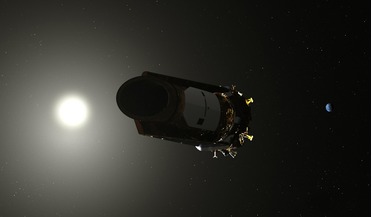 19 November 2018
Kepler officially retires after receiving final "goodnight" commands
19 November 2018
Kepler officially retires after receiving final "goodnight" commands
... the spacecraft needs three functioning wheels to continally monitor a star’s brightness for signs of Earth-sized exoplanets, its field-of-view had to be switched roughly every three months to compensate for the mechanical glitch... mission, dubbed K2, which lasted another four years and bumped Kepler's count of surveyed stars up to more than 500,000. Up until it ran out of fuel, Kepler continued to gather data and some of the most recent analyses...
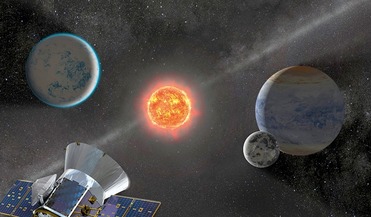 April 2019
Scanning the skies for exoplanets
April 2019
Scanning the skies for exoplanets
...that will be 400 times larger than that covered by Kepler. Like Kepler, TESS will search for exoplanets by detecting the fractional dip in a star’s brightness as an orbiting exoplanet passes by, a technique known as the transit method.... their host stars in 13 days or less; these are considered short orbital period exoplanets. Conversely, Kepler was adept at finding exoplanets with orbital periods from 10 days up to a few hundred days, a feature ...
 August 2018
Exoplanet census promises radical discoveries
August 2018
Exoplanet census promises radical discoveries
... police radar guns to detect speeding cars. Figure 1: The sensitivity regions of the Kepler transit survey (in red) and the WFIRST exoplanet microlensing survey (in blue) are compared to the orbits of the planets in our ... planet or star in systems with more than one host star. The combination of the WFIRST exoplanet microlensing survey and Kepler’s transit survey will provide a complete statistical census of planets at all separations. This is the...
 November 2018
How many people does it take to colonise an exoplanet?
November 2018
How many people does it take to colonise an exoplanet?
... Located at 4.2 light years (40,000 billion km), Proxima Centauri b is almost an ideal destination - as far as exoplanets go. But while this distance may be small by astronomical standards, it remains utterly vast on the human scale. The...not a strict, definitive number for colonisation projects. Artist’s concept of the surface of TRAPPIST-1f, an exoplanet about 40 light years from Earth. Cows in space? Sending a ship laden with frozen embryos ...
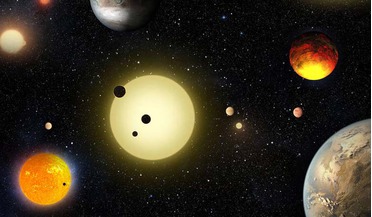 11 May 2016
Kepler scientists announce a major increase in confirmed exoplanet numbers
11 May 2016
Kepler scientists announce a major increase in confirmed exoplanet numbers
... day, 7 days a week, 365 days a year looking for the tell-tale sign of a would be exoplanet. The technique Kepler uses is known as the transit method and it works by measuring the dip in star light as a planet ...deemed imposters. We could count on throwing away at least 60 - 70 percent of the transit-like signals that the telescope recorded.” The outlook for exoplanet surveys improved dramatically with the launch of Kepler and within its first...
 24 November 2021
Astronomers discover more than 350 possible new exoplanets
24 November 2021
Astronomers discover more than 350 possible new exoplanets
... smaller, dimmer red dwarf stars instead. Dubbed K2, this “Second Light" mission lasted as long as Kepler’s first exoplanet hunt and bumped its count of surveyed stars up to more than 500,000. But, after nine years in deep space..., Kepler ran out of fuel and NASA decided to retire the spacecraft in a safe orbit, away from Earth...
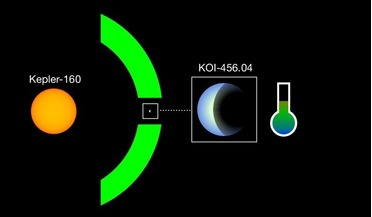 05 June 2020
Exciting exoplanet find around sun-like star
05 June 2020
Exciting exoplanet find around sun-like star
... worlds, detections of rocky worlds around Sun-like stars is comparatively rare, due to the techniques used to find exoplanets. But by improving on an old detection method, a team of German and US scientists have now found a ... not new. It was discovered around ten years ago, followed by the confirmation of two exoplanets, called Kepler-160b and Kepler-160c, four years later. Both of these planets though are substantially bigger than Earth and...
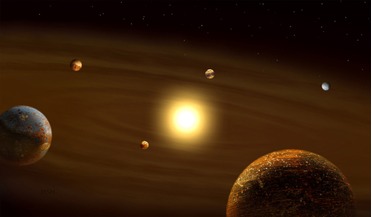 27 July 2019
Hundreds of new planet candidates detected by Kepler
27 July 2019
Hundreds of new planet candidates detected by Kepler
...not the only one making substantial discoveries. Although now officially retired, NASA’s first formidable exoplanet telescope – Kepler – has gone one better. Make that a few hundred better. By scanning through ...title – K2 – and 15 months after being reassigned to its new stellar target, Kepler had racked up its 1,000th confirmed exoplanet discovery. Kepler’s K2 mission comprised of 19 ‘campaigns,’ lasting around 80 days each. These new discoveries...
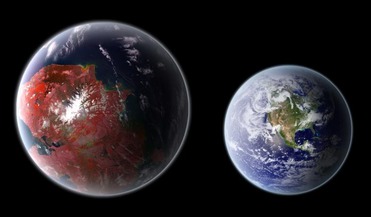 23 June 2021
Exoplanets with Earth-like biospheres may be rare
23 June 2021
Exoplanets with Earth-like biospheres may be rare
... use to convert light and carbon dioxide into oxygen and nutrients. All except one. That planet is Kepler-442b; a rocky planet about twice the mass of the Earth, orbiting a moderately hot star to receive just... Webb Space Telescope (JWST) launches later this year, it will have the sensitivity to study the atmospheres of exoplanets and to search for the building blocks of life elsewhere in the Universe. However, with such stringent conditions...